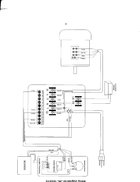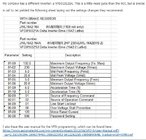I have a 17 year old Jet 1642 1.5hp 120v lathe.
When I turn it on, nothing happens. The RPMs register when I turn it, but that is all.
I replaced the on/off switch, but it didn't help; both switches test out okay.
The VFD display is blank; presumably it either isn't getting power or is broken. (to be honest, it is on the back of the machine and I never really looked at it, so I don't know for sure it ever showed anything).
The contacts on the forward/reverse switch show Vac whether the power switch is on or off, and Vdc when it is on. I don't know what that means, but the DC has to be coming from somewhere.
I asked about this problem at the local woodworkers club. Someone had the same problem a few years ago with his 1642 220v and fixed it with information he got here. Of course the replacement part and programming would all be different, so he didn't think he could give me much help; but suggested I post here and see if anyone has fixed a 1642 120v.
I would be most grateful for any help.
When I turn it on, nothing happens. The RPMs register when I turn it, but that is all.
I replaced the on/off switch, but it didn't help; both switches test out okay.
The VFD display is blank; presumably it either isn't getting power or is broken. (to be honest, it is on the back of the machine and I never really looked at it, so I don't know for sure it ever showed anything).
The contacts on the forward/reverse switch show Vac whether the power switch is on or off, and Vdc when it is on. I don't know what that means, but the DC has to be coming from somewhere.
I asked about this problem at the local woodworkers club. Someone had the same problem a few years ago with his 1642 220v and fixed it with information he got here. Of course the replacement part and programming would all be different, so he didn't think he could give me much help; but suggested I post here and see if anyone has fixed a 1642 120v.
I would be most grateful for any help.





